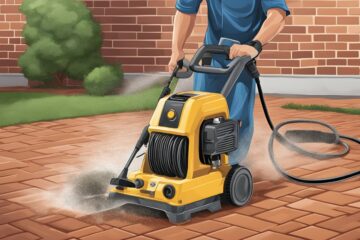Selecting the right materials is vital for durability and safety when building a house. The strongest building materials, such as concrete, steel, and engineered wood, provide exceptional structural integrity, ensuring your home can withstand various environmental challenges. Understanding the properties of these materials can help you make informed choices that will benefit your residential construction project.
Homeowners often prioritise aesthetics and cost, but the long-term value of a home heavily relies on its foundation and framework. By investing in robust materials, you enhance not only the longevity of your house but also its ability to resist natural disasters and wear over time. Knowing what to choose can lead to a more secure and comfortable living space for you and your family.
In this article, you will discover the strengths and applications of various building materials, helping you to design a home that meets your needs and stands the test of time. From the strength of reinforced concrete to the versatility of steel beams, the insights provided will guide you towards making choices that reinforce your investment in a reliable structure.
Fundamentals of Building Materials
Building materials play a crucial role in determining the structural integrity of a house. Understanding their key properties, including strength, durability, cost-effectiveness, and sustainability, is essential for making informed decisions.
Defining Strength and Durability in Construction
Strength refers to a material’s ability to withstand loads without failing. In construction, this includes compressive strength, tensile strength, and shear strength. Durability involves the material’s resistance to wear, weathering, and other environmental factors over time.
Common building materials like concrete and steel are regarded for their high strength-to-weight ratios. For instance, concrete can handle heavy loads while being relatively low in weight. Timber, while lighter, offers good strength but varies significantly in durability depending on its type and treatment.
Assessing Material Properties for Structural Integrity
Assessing material properties is vital for ensuring structural integrity. Key properties include moisture resistance, thermal conductivity, and fire resistance. For example, materials with low thermal conductivity contribute to energy efficiency in a home.
Conducting standard tests, such as tensile strength tests for metals and compressive strength tests for concrete, can provide crucial data. Builders use these assessments to choose materials that meet specific performance criteria based on the local environment and the desired life span of the structure.
Cost-Effectiveness and Sustainability
When selecting building materials, cost-effectiveness is essential. You need to consider not just initial costs but long-term maintenance and energy expenses. Eco-friendly materials, such as bamboo or recycled steel, can reduce your project’s carbon footprint.
Sustainability also plays a significant role. Materials that demonstrate longevity and require minimal resources for production can contribute to a lower environmental impact. Opting for locally sourced materials can enhance sustainability by reducing transportation emissions and supporting local builders.
Key Building Materials and Their Advantages
When considering materials for constructing a house, several key options stand out. Each material comes with distinct advantages that contribute to the strength, durability, and sustainability of your home.
Steel: Versatility and Strength
Steel is renowned for its incredible strength and versatility. As a structural material, it can support large loads while remaining lightweight compared to alternatives. This strength allows for innovative architectural designs, including open floor plans and high ceilings.
Recycled steel is widely available, making it an eco-friendly option. It resists warping, cracking, and corrosion, which enhances durability and low maintenance. This longevity makes steel a cost-effective choice over time, as it requires fewer repairs or replacements.
Concrete: The Foundation of Modern Construction
Concrete is a fundamental building material, crucial for foundations, floors, and walls. Its high compressive strength allows it to endure heavy loads, making it ideal for basements and multi-storey buildings.
Concrete also provides excellent thermal mass, helping to regulate indoor temperature. Incorporating cement with aggregates such as gravel or sand further enhances its properties. Plus, variations such as fibre-reinforced concrete improve tensile strength and reduce cracking.
Wood and Engineered Wood Products
Wood is a traditional and versatile material often used in residential construction. It is renewable, providing a sustainable option for eco-conscious builders. Solid wood offers aesthetic appeal and good insulation properties.
Engineered wood products like plywood and laminated beams combine layers of wood for enhanced strength and stability. They are less liable to warping and splitting, making them reliable for modern construction techniques.
Innovative Use of Bricks and Stones
Bricks and stones provide a timeless aesthetic along with excellent durability. Traditionally used for external walls, bricks offer thermal mass benefits, helping to regulate indoor temperatures and improve energy efficiency.
Modern innovations allow for the use of recycled bricks, enhancing sustainability. Stone, while more expensive, provides natural weather resistance and low maintenance needs. Its long lifespan adds significant value to your home.
Emerging Eco-Friendly Materials
Sustainable building materials are gaining traction in modern construction. Bamboo is a notable option due to its rapid growth and strength. It is highly renewable and can replace traditional wood in many applications.
Recycled materials, including steel and lumber, contribute to a reduced carbon footprint. Incorporating these materials demonstrates a commitment to environmental responsibility. These options not only help the planet but can also enhance the design and functionality of your home.
Construction Techniques Enhancing Material Strength
In construction, utilising advanced techniques can significantly augment the strength and durability of building materials. Focusing on reinforcement, modern masonry practices, and efficient insulation systems can enhance structural integrity and energy performance.
Reinforcement and Support: Steel Rebar and Beams
Reinforced concrete is a primary choice in contemporary construction. The inclusion of steel rebar within concrete provides tensile strength, allowing structures to withstand various stresses.
When concrete is set, steel bars are embedded to counteract tensile forces, enhancing the material’s overall strength. Beams made from steel or reinforced concrete are essential in supporting loads and distributing weight throughout the structure.
Utilising high-strength steel in beam construction can further improve resilience. This combination of materials ensures buildings can endure environmental factors while maintaining structural integrity.
Innovations in Masonry and Blockwork
Recent advancements in masonry have led to the development of more robust blockwork systems. Modern masonry units, such as concrete blocks and bricks, are designed for greater compressive strength.
Using insulation blocks not only improves thermal performance but also adds strength to walls. Innovations like Interlocking Stabilised Soil Blocks (ISSB) provide an eco-friendly alternative while enhancing stability.
A critical aspect of blockwork is the proper bonding technique, which can significantly affect a wall’s strength. By incorporating techniques like staggered joints, loads can be distributed more uniformly, leading to more durable masonry structures.
Insulation and Efficiency in Modern Buildings
Insulation plays a vital role in the construction process. Structural Insulated Panels (SIPs) and Insulated Concrete Forms (ICFs) provide excellent thermal performance while reinforcing overall structure strength.
SIPs consist of a layer of foam insulation sandwiched between two sheets of structural board, creating a strong, energy-efficient building envelope. ICFs combine insulation with concrete to deliver superior energy efficiency and enhanced structural stability.
These methods not only contribute to the warmth and comfort of your home but also reduce energy costs, making constructions more sustainable. By ensuring your building materials are complemented by effective insulation techniques, you can create a robust, energy-efficient structure.
Considering the Aesthetic and Environmental Impact
When selecting building materials, it’s crucial to balance aesthetic appeal with environmental concerns. Your choices can significantly influence both the appearance of your home and its ecological footprint.
Aesthetic Appeal versus Functional Needs
Aesthetic appeal is essential for creating a welcoming and beautiful home. Materials like hardwood, stone, and high-quality brick not only enhance visual charm but also provide durability.
You might consider colours, textures, and styles that complement your landscape. For example, natural stone offers a timeless look, while modern concrete can provide a sleek finish.
It’s vital to choose materials that resonate with your personal style while serving functional needs like insulation and maintenance. Low-maintenance options often simplify upkeep, allowing you to enjoy your living space without constant repairs.
Reducing Environmental Impact with Green Materials
Opting for green materials can significantly reduce your home’s environmental impact. Look for recyclable and renewable options like bamboo, reclaimed wood, and recycled metal. These choices not only lessen waste but also support sustainable sourcing practices.
Many green materials offer natural beauty, allowing you to maintain aesthetics without compromising the environment.
Additionally, low-emission materials contribute to better indoor air quality. When selecting paints, finishes, or insulating materials, ensure they meet eco-friendly standards. Such options typically include less harmful chemicals, promoting a healthier living environment.
Frequently Asked Questions
This section addresses common queries about building materials renowned for strength, durability, and energy efficiency. You will find useful information about various materials and considerations that impact your choices when constructing a home.
What are the top materials renowned for their strength in house construction?
Concrete and steel are often cited as the strongest materials. Reinforced concrete combines the compressive strength of concrete with the tensile strength of steel. Other materials include timber, particularly engineered wood, and masonry, which also provide significant strength depending on their composition and design.
Which building materials offer the highest energy efficiency for residential properties?
Materials like insulated concrete forms (ICFs) and structural insulated panels (SIPs) provide excellent insulation, reducing energy loss. Additionally, high-performance windows and doors contribute to energy efficiency, as do materials with reflective properties that help regulate indoor temperatures.
Can you specify some materials that ensure long-term durability for homes?
Brick and stone are naturally durable, resisting weathering and pests. Fibre-cement siding is another durable option, often outlasting traditional wood siding. Metal roofing also offers longevity, with resistance to rot, fire, and insect damage.
Beyond steel and concrete, what other robust materials are suitable for constructing houses?
Timber frame construction can be robust, particularly when using treated or laminated wood. Bamboo is gaining popularity for its strength and sustainability. Other materials such as rammed earth and cob are also robust options that provide unique aesthetic qualities.
What factors should be considered when choosing the strongest materials for building a house?
You should consider factors such as climate, budget, and local building codes. It’s also important to assess the materials’ thermal performance, fire resistance, and potential environmental impact. Longevity and maintenance requirements are additional considerations that influence material choice.
What are common materials used for constructing urban housing that provide structural integrity?
In urban housing, reinforced concrete, steel framing, and brick are prevalent. Precast concrete panels are also popular for their speed of construction and strength. Additionally, timber can be used effectively in low-rise urban developments, balancing structural integrity with aesthetic appeal.


